Honeywell T6 Wi-Fi Installation Manual: A Comprehensive Guide
This manual provides step-by-step instructions for installing the Honeywell T6 Wi-Fi thermostat, covering system requirements, compatibility checks, and detailed setup processes to ensure smooth installation and operation.
The Honeywell T6 Wi-Fi Thermostat is a smart, programmable device designed to enhance home comfort and energy efficiency. Part of the Lyric series, it offers intuitive temperature control, scheduling, and geofencing capabilities. Compatible with most HVAC systems, including heat pumps, it requires a 24VAC power source (C wire). The thermostat features a sleek design, touch-screen interface, and seamless integration with smart home systems via Wi-Fi. It is designed for easy installation and operation, providing users with remote access through the Honeywell Home app. This thermostat is ideal for modern homes seeking advanced climate control and smart connectivity.
1.2. Importance of Proper Installation
Proper installation of the Honeywell T6 Wi-Fi Thermostat is crucial for optimal performance and functionality. Incorrect wiring or setup can lead to system malfunctions, reduced efficiency, and potential safety hazards. Ensuring all connections are secure and compatible with existing HVAC systems prevents issues like incorrect temperature readings or Wi-Fi connectivity problems. Following the installation manual closely guarantees smooth operation, energy savings, and full access to smart features. Professional installation is recommended for complex systems, while DIY enthusiasts must adhere strictly to guidelines to avoid errors and ensure reliability.
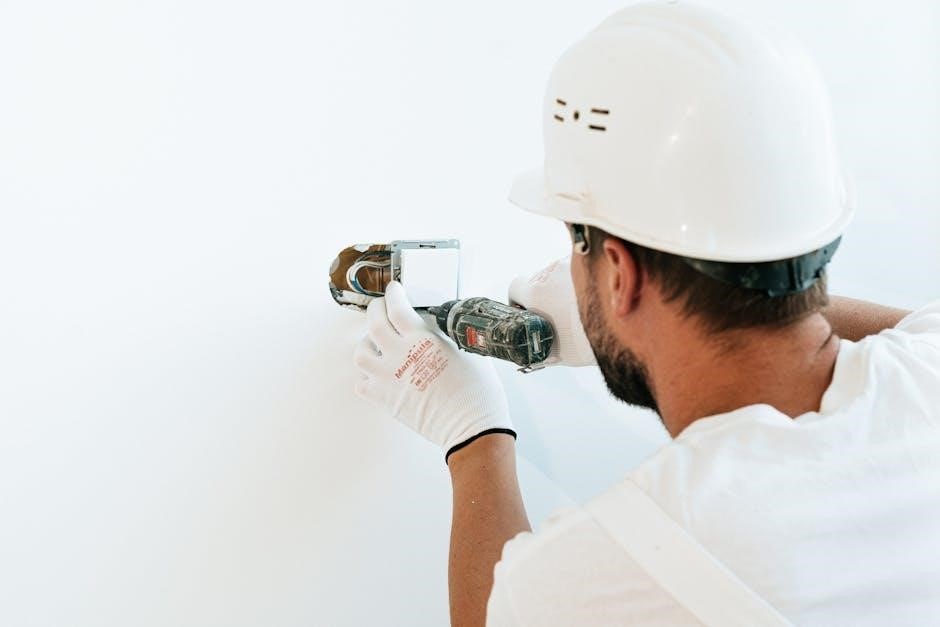
System Requirements and Compatibility
The Honeywell T6 Wi-Fi Thermostat requires a 24VAC power supply and is compatible with most heating, cooling, and heat pump systems. It does not support electric baseboard heat (120-240V) or millivolt systems. A compatible smartphone (iOS or Android) is needed for the Honeywell Home app, ensuring seamless Wi-Fi connectivity and smart home integration.
2.1. Checking Compatibility with Existing HVAC Systems
Before installing the Honeywell T6 Wi-Fi Thermostat, ensure compatibility with your HVAC system. It supports most heating, cooling, and heat pump systems but does not work with electric baseboard heat (120-240V) or millivolt systems. Verify that your system operates on 24VAC power and does not require a C-wire for compatibility. Additionally, check if your HVAC system supports features like staging (1 or 2 stages) and ventilation control. Ensure your smartphone or tablet is compatible with the Honeywell Home app for Wi-Fi setup and smart home integration. This step is crucial to avoid installation issues and ensure optimal performance.
2.2. Necessary Tools and Materials for Installation
To install the Honeywell T6 Wi-Fi Thermostat, gather the following tools and materials: a screwdriver, drill, level, and wire strippers. Required materials include wall anchors, mounting screws, and 18-22 gauge thermostat wire. The UWP (Universal Wall Plate) and Honeywell Standard Installation Adapter are provided in the package. Ensure you have ahammer for tapping wall anchors and a smartphone or tablet for app setup. Optional items include a decorative cover plate and additional wiring connectors for complex systems. Proper tools ensure a secure and professional installation, while materials guarantee compatibility and long-term functionality of the thermostat.
2.3. Understanding Wi-Fi Requirements
For optimal performance, the Honeywell T6 Wi-Fi Thermostat requires a stable internet connection with a 2.4 GHz Wi-Fi network. Ensure your router is within range and supports WPA or WPA2 encryption. A strong signal strength is crucial for remote access and smart features. During installation, use the Honeywell Home app to connect the thermostat to your network. Avoid using guest networks or VPNs, as they may restrict functionality. Once connected, the thermostat will update automatically and integrate seamlessly with smart home systems for enhanced control and energy management.
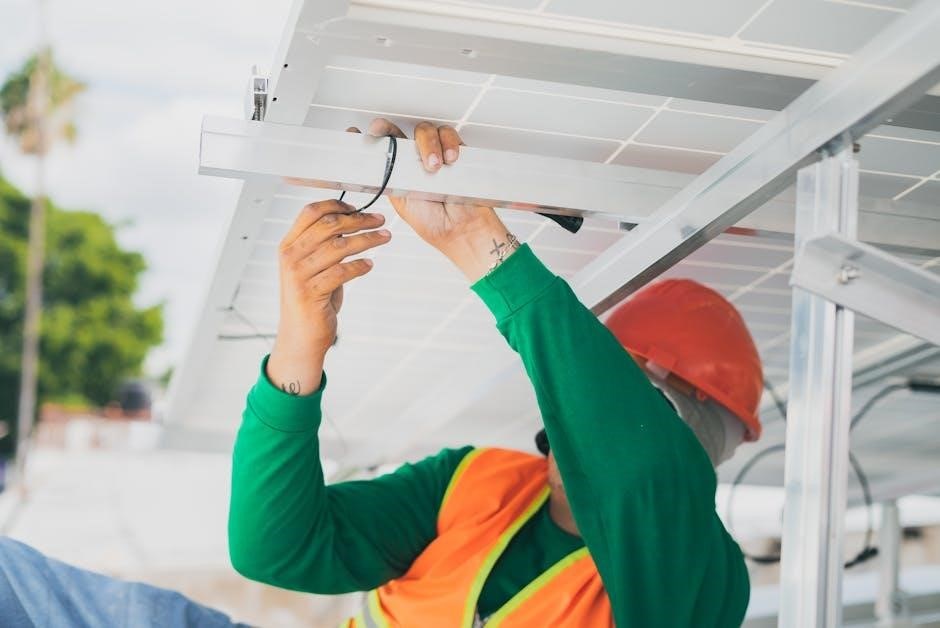
Installation Process
The Honeywell T6 Wi-Fi installation involves preparing the site, mounting the UWP, wiring the thermostat, and configuring settings to ensure proper setup and system operation as outlined in the manual.
3.1. Preparing the Site for Installation
Before installing the Honeywell T6 Wi-Fi thermostat, ensure the site is prepared. Turn off power to the HVAC system at the circuit breaker. Remove any existing thermostats and clean the area around the wall plate. Check for levelness and mark the wall where the UWP (Universal Wall Plate) will be mounted. Verify the wiring compatibility and ensure all necessary tools are available. If upgrading, carefully disconnect wires from the old thermostat and set aside. Ensure the wall is clear of debris and paint gaps are covered if needed. This preparation ensures a smooth and secure installation process for the new thermostat.
3.2. Mounting the UWP (Universal Wall Plate)
Mounting the UWP (Universal Wall Plate) is crucial for a secure installation. Start by opening the UWP package and positioning it on the wall, ensuring it is level. Mark the screw holes and drill pilot holes if necessary. Insert wall anchors into the holes and gently tap them in. Place the UWP over the anchors, aligning the screw holes. Secure the UWP with the provided screws, tightening until firm but avoiding overtightening. Ensure the plate is flush against the wall and level. This step provides a stable base for the Honeywell T6 Wi-Fi thermostat, ensuring proper fit and functionality;
3.3. Wiring the Thermostat

Wiring the Honeywell T6 Wi-Fi thermostat requires careful attention to terminal designations. Use 18- to 22-gauge thermostat wire, ensuring connections match the UWP terminals. Begin by turning off power to the HVAC system. Identify and label wires from the old thermostat (e.g., R, W, Y, G). Insert each wire into the corresponding terminal on the UWP, securing them firmly. Set slider tabs based on system type: up for single R wire, down for dual. Tug gently to confirm wires are secure. For heat pumps and ventilation systems, refer to wiring diagrams for correct configurations. Double-check all connections for accuracy and security before proceeding.
3.4. Setting the Slider Tabs for Proper Configuration
Setting the slider tabs on the Honeywell T6 Wi-Fi thermostat is essential for proper system configuration. Determine if your HVAC system uses one or two transformers. For a single transformer system, set the R slider tab to the up position. For dual transformer systems, set it to the down position. This configuration ensures the thermostat operates correctly with your specific HVAC setup. Refer to the wiring diagrams in the manual for guidance, especially for heat pumps or ventilation systems, which may require additional configurations. Always verify the slider tab positions match your system type to ensure accurate thermostat operation and efficiency.
3.5. Completing the Physical Installation
After wiring and configuring the slider tabs, insert the wires into the UWP terminals and secure them. Mount the thermostat to the UWP, ensuring it is level and firmly attached. Tighten the screws gently to avoid damage. If using a decorative cover plate, attach it to conceal any gaps. Finally, restore power to the system and perform a quick test to ensure all components function correctly. This completes the physical installation, preparing the thermostat for initial setup and configuration through the Honeywell Home app or the thermostat interface.
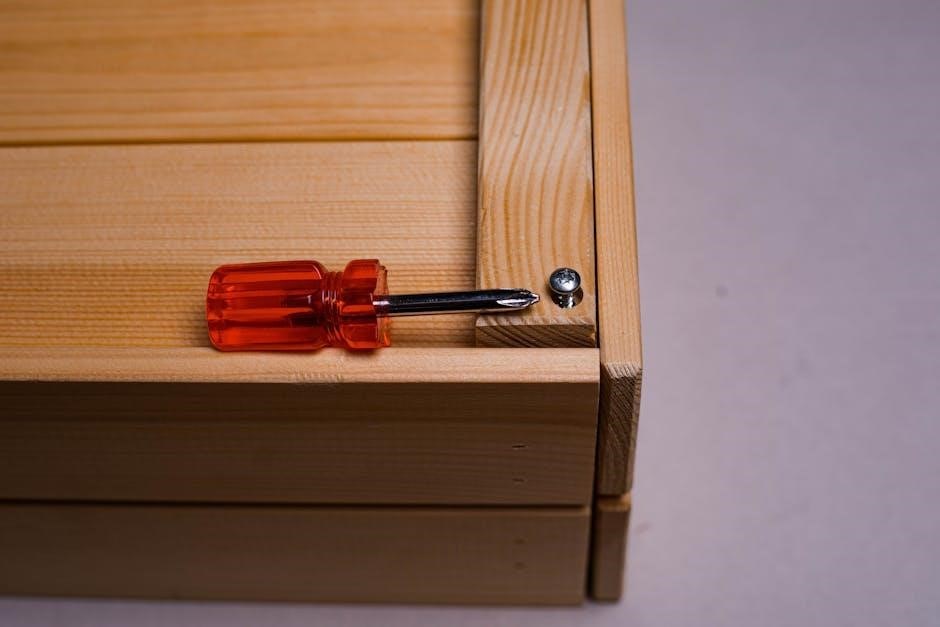
Initial Setup and Configuration
Power up the thermostat, then select “Start Setup” on the screen. Use the Honeywell Home app or the thermostat interface to configure Wi-Fi and system preferences.
4.1. Using the Thermostat for Initial Setup
After installation, power on the thermostat and select “Start Setup” on the display. Choose “No” when prompted to use the Lyric app. Navigate through the on-screen menu to configure basic settings like temperature range and system type. Ensure the R Slider Tab is correctly set based on your HVAC system. Use the touchscreen to enable features like geofencing or schedule preferences. If issues arise, refer to the troubleshooting section or reset the thermostat by holding the menu button for five seconds. Proper setup ensures optimal performance and smart home integration.
4.2. Setting Up the Honeywell Home App
Download the Honeywell Home app from the App Store or Google Play. Create an account or log in if you already have one. Power on the thermostat and initiate the setup process. Select “No” when prompted about using the app during the thermostat’s initial setup. Ensure the thermostat is connected to your Wi-Fi network. Open the app, and follow the in-app instructions to link the thermostat to your account. This may involve a pairing process or entering a code. Once connected, you can configure advanced features like scheduling and geofencing. If issues arise, refer to the app’s troubleshooting guide or reset the thermostat by holding the menu button for five seconds.
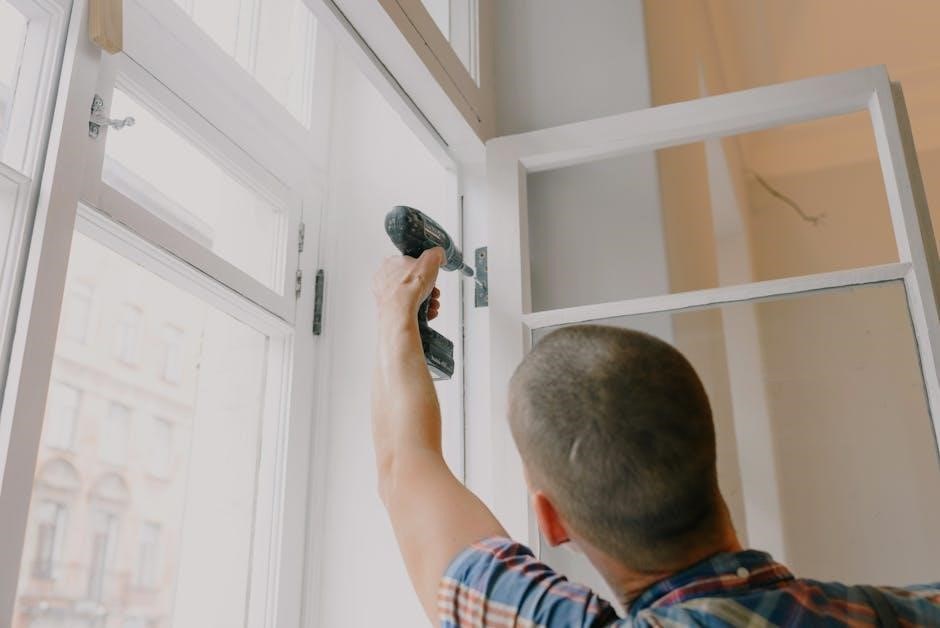
Advanced Configuration Options
Access the Installer Setup Options (ISU) through the advanced menu for detailed system customization. Configure Wi-Fi settings and create custom schedules to optimize heating and cooling preferences.
5.1. Installer Setup Options (ISU) ⏤ Advanced Menu
The Installer Setup Options (ISU) provide advanced configuration tools for professional installers. Access the ISU by holding the Menu button for 5 seconds to unlock the advanced menu. This feature allows detailed system customization, including thermostat settings, wiring configurations, and system tests. Use the ISU to configure heat pump systems, ventilation controls, and advanced heating/cooling options. The ISU also enables troubleshooting and diagnostic checks to ensure optimal performance. Proper setup in this menu is crucial for compatibility with various HVAC systems and for achieving reliable operation.
5.2. Configuring Wi-Fi Connection
Configuring the Wi-Fi connection on the Honeywell T6 Wi-Fi thermostat ensures seamless smart home integration. Download the Honeywell Home app to access a hidden PRO installation feature. During setup, select your home Wi-Fi network and enter the password. The thermostat will connect automatically. Ensure the router is nearby and supports 2.4 GHz frequency. If issues arise, restart the router and thermostat. Once connected, the app allows remote temperature control and scheduling. A stable Wi-Fi connection is essential for features like geofencing and energy reports. Troubleshoot connectivity issues by checking network strength and ensuring proper firmware updates.
5;3. Setting Up Schedules and Preferences
Setting up schedules and preferences on the Honeywell T6 Wi-Fi thermostat allows for customized comfort and energy efficiency. Use the Honeywell Home app to create daily schedules, adjusting temperature settings for different times of the day. Set preferences like temperature ranges, geofencing, and smart alerts to tailor the system to your lifestyle. Enable features like energy-saving modes or vacation settings to optimize performance. Customize alerts for filter changes, extreme temperatures, and system notifications. These settings ensure your home remains comfortable while saving energy, and can be easily adjusted via the app or thermostat interface.

System Testing and Verification
After installation, test the Honeywell T6 Wi-Fi thermostat by checking heating, cooling, and ventilation systems. Verify Wi-Fi connectivity and ensure all features function correctly for optimal performance.
6.1. Performing a System Test
After installation, perform a system test to ensure the Honeywell T6 Wi-Fi thermostat operates correctly. Access the advanced menu by holding the menu button for five seconds. Navigate to the system test option and select the desired test type, such as heating, cooling, or ventilation. The thermostat will activate the corresponding systems to verify functionality. Check for proper responses from your HVAC equipment, ensuring all components operate as expected. If issues arise, refer to the troubleshooting section or error codes for resolution. This step is crucial to confirm the system is functioning optimally before finalizing the setup.
6.2. Verifying Wi-Fi Connectivity
After completing the physical installation, ensure the Honeywell T6 Wi-Fi thermostat connects to your Wi-Fi network. Open the Honeywell Home app and follow the in-app instructions to link the thermostat. On the thermostat itself, navigate to the Wi-Fi settings menu and select your network from the list. Enter your password and confirm connectivity. The thermostat will display a confirmation message once connected. Ensure your router is nearby and supports 2;4 GHz networks, as the T6 does not support 5 GHz. If issues arise, restart your router or check your network password for accuracy; A stable connection is essential for remote functionality.
6.3. Ensuring Proper System Operation
After installation, verify the Honeywell T6 Wi-Fi thermostat operates correctly. Check the display for proper temperature readings and system status. Perform a system test by accessing the advanced menu and selecting “System Test.” Ensure heating, cooling, and fan modes function as expected. Verify that stage 1 and stage 2 systems (if applicable) activate correctly. Check for error codes or alerts and address any issues promptly. Ensure the thermostat responds to manual adjustments and schedules. Test geofencing and remote access via the Honeywell Home app to confirm seamless smart functionality. Proper operation ensures reliable temperature control and energy efficiency.

Troubleshooting Common Issues
Address common issues like Wi-Fi disconnections, blank screens, or system errors by checking connections, power, and settings. Refer to specific sections for detailed solutions and error codes.
7.1. Common Installation and Setup Problems
Common issues during installation include incorrect wiring, improper UWP mounting, and slider tab misconfiguration. Ensure all connections are secure and verify the R Slider Tab position matches your system type. If the thermostat fails to power on, check the circuit breaker and HVAC system switch. Connectivity problems may arise from weak Wi-Fi signals or incorrect network settings. Resetting the thermostat or restarting your router can often resolve these issues. Always refer to the wiring diagram and manufacturer guidelines for troubleshooting specific problems during setup.
7.2. Resolving Wi-Fi Connectivity Issues
To resolve Wi-Fi connectivity issues with the Honeywell T6 thermostat, ensure your router is functioning properly and restart it if necessary. Verify the thermostat is within range of your Wi-Fi network and avoid obstructions. Check that the Wi-Fi signal strength is strong and consider moving the router closer if needed. Ensure the thermostat’s firmware is up to date, as outdated software can cause connectivity problems. If issues persist, reset the thermostat to factory settings or reinstall the Honeywell Home app to reconfigure the connection. Always refer to the user manual for detailed troubleshooting steps specific to your system.
7.3. Understanding Error Codes and Alerts
The Honeywell T6 Wi-Fi thermostat displays error codes and alerts to indicate specific issues. Common errors include “Replace Air Filter” or connectivity problems like “Wi-Fi Not Configured.” These alerts help identify system malfunctions or maintenance needs. Refer to the user manual for code definitions, as each error corresponds to a specific issue. For connectivity issues, restart the thermostat or router, ensuring a stable internet connection. If errors persist, check wiring and configuration or restore factory settings. Addressing these alerts promptly ensures optimal performance and prevents potential system damage. Always consult the manual for detailed troubleshooting guidance specific to each error code.
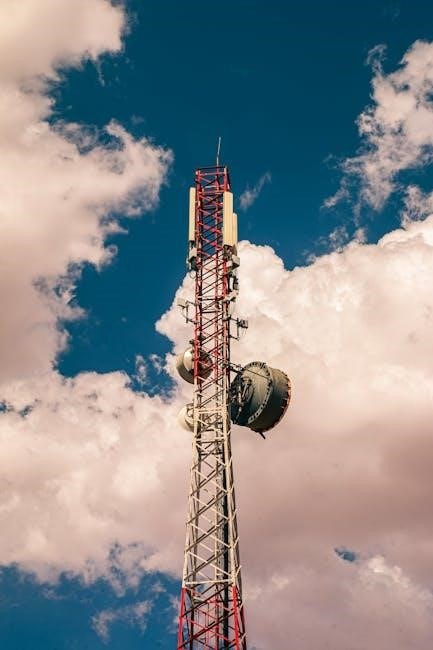
Maintenance and Upkeep
Regular maintenance ensures the Honeywell T6 Wi-Fi thermostat operates efficiently. Clean the display and sensors, update software, and check connections to maintain performance and extend lifespan.
8.1. Regular Maintenance Tips
Regular maintenance of the Honeywell T6 Wi-Fi thermostat is essential for optimal performance. Clean the device with a soft cloth to remove dust and debris, ensuring accurate temperature readings. Check and tighten all wire connections to prevent signal loss. Update the thermostat’s software and firmware regularly to access the latest features and improvements. Inspect the UWP mounting system for stability and adjust if necessary. Additionally, replace air filters as recommended to maintain HVAC efficiency and integrate with the thermostat’s scheduling features for energy savings.
8.2. Updating Software and Firmware
Regular software and firmware updates ensure the Honeywell T6 Wi-Fi thermostat operates with the latest features and security. To update, open the Honeywell Home app, navigate to the menu, and select “Update” if available. The thermostat will download and install the update automatically. Ensure the device remains powered during the process. Updates may improve Wi-Fi connectivity, enhance scheduling options, and fix potential issues. Always check for updates during maintenance to keep your system running smoothly and efficiently. This ensures optimal performance and compatibility with smart home integrations.
8.3. Cleaning and Inspecting the Thermostat
Regularly clean and inspect the Honeywell T6 Wi-Fi thermostat to ensure optimal performance. Use a soft, dry cloth to wipe the display and vents, removing dust or debris. Avoid harsh chemicals or liquids. Inspect the wiring connections on the UWP (Universal Wall Plate) for secure connections and no damage. Check for any blockages in the ventilation openings to maintain proper airflow. Cleaning and inspection should be done every 6 months or as needed to prevent issues. This maintenance ensures accurate temperature sensing and reliable operation, keeping your system running efficiently and effectively. Proper care extends the lifespan of your thermostat and maintains its functionality.

Additional Features and Integrations
The Honeywell T6 Wi-Fi thermostat offers advanced features like scheduling, geofencing, and smart home system integration, enabling seamless control through the Honeywell Home app for enhanced convenience and energy savings.
9.1. Scheduling and Geofencing
The Honeywell T6 Wi-Fi thermostat allows users to create custom schedules and utilize geofencing technology. Through the Honeywell Home app, users can set temperature preferences based on their location and daily routines. Geofencing automatically adjusts the temperature when you leave or arrive home, optimizing energy usage. Scheduling features enable users to pre-program temperature changes for different times of the day or week, ensuring comfort and efficiency. These features are easily configurable via the app, offering a seamless and intuitive user experience.
9.2. Integration with Smart Home Systems
The Honeywell T6 Wi-Fi thermostat seamlessly integrates with popular smart home systems like Apple HomeKit and Amazon Alexa. This compatibility allows voice control and centralized management of your heating and cooling system. Users can pair the thermostat with smart home hubs or voice assistants for enhanced convenience. The Honeywell Home app also enables remote adjustments and scheduling, ensuring your home comfort needs are met effortlessly. This integration enhances energy efficiency and provides a unified smart home experience, making it easy to control your environment from a single platform.
9.3. Energy Saving Features
The Honeywell T6 Wi-Fi thermostat offers advanced energy-saving features designed to optimize your home’s heating and cooling system. With geofencing technology, the thermostat automatically adjusts temperatures based on your location, ensuring energy isn’t wasted when you’re away. Smart scheduling allows you to create customized temperature profiles for different times of the day, reducing unnecessary energy use. The thermostat also learns your preferred settings and adapts to your lifestyle, providing consistent comfort while minimizing energy consumption. Additionally, the Honeywell Home app offers insights and recommendations to further enhance energy efficiency, helping you save on utility bills without compromising comfort.
With proper installation and setup, the Honeywell T6 Wi-Fi thermostat ensures optimal performance, energy efficiency, and smart home integration, providing a seamless and comfortable experience for users.
10.1. Final Checks and Verification
After completing the installation, perform final checks to ensure all systems function correctly. Verify that the thermostat powers on, displays the correct temperature, and responds to manual adjustments. Check the Honeywell Home app for successful Wi-Fi connectivity and remote control functionality. Test the heating and cooling systems to confirm they activate as programmed. Review error logs for any issues and ensure all wiring connections are secure. Finally, confirm that schedules and preferences are set accurately for optimal performance and energy savings. A thorough verification ensures your Honeywell T6 Wi-Fi thermostat operates efficiently and meets your comfort needs.
10.2. Ensuring Optimal Performance
To ensure the Honeywell T6 Wi-Fi thermostat operates at its best, regularly update its software and firmware via the Honeywell Home app. Schedule periodic checks of wiring connections and clean the thermostat’s exterior to maintain accuracy. Place the device away from direct sunlight and heat sources to avoid skewed temperature readings. Optimize schedules and preferences in the app for energy efficiency and comfort. Additionally, monitor and adjust settings based on usage patterns and seasonal changes. Proper maintenance and adjustments will ensure the thermostat performs reliably and efficiently, providing consistent comfort and energy savings.

